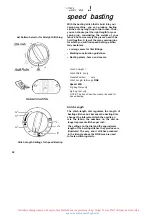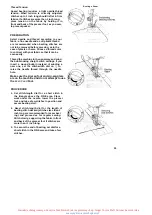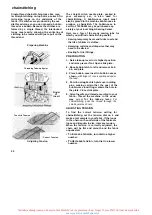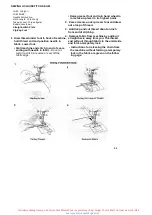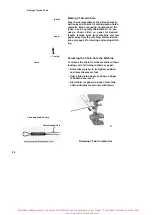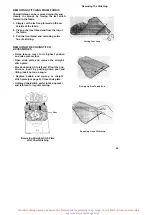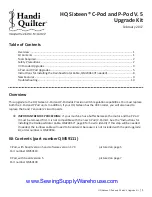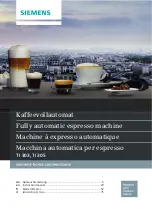
BLINDSTITCH HEMS
Wrong Side-
of Fabric
•-Hem
Edge
-Soft
Fold
-1/4'
Creating Soft Fold
j
•
Stitch: BMndstitch *
• Stitch Width:
2
to
5
(depending on fabric)
• Needle Position:
or ^
• Stitch Length:
6
to
1 2
• Zig-Zag Plate
• Zig-Zag Foot
• Blindstitch Hem Guide
Blindstitching takes a little practice, so make
a test sample first.
Raise take-up lever to its highest position.
1. Raise presser foot, loosen presser-foot
screw, and slip blindstitch hem guide be
tween screw and shank of zig-zag foot.
Make sure underside of guide clears slide
plate and front of foot. Tighten presser-foot
screw.
2. Turn up hem in width desired. Apply ap
propriate finish to hem edge and press.
(You may want to baste the turned hem to
hold it in place. If so, be sure to place
basting at least
V
2
inch
below
top edge of
hem.)
3. Fold the hem back against right side of gar
ment, creating a soft fold about
V
a
inch
from top edge of hem on wrong side of
work. Press lightly.
4. Position hem under foot with soft fold rest
ing against wall of guide. Make sure flange
of guide is between the soft fold and top of
hem.
5. Lower the foot and stitch so that the straight
stitches fail on the hem edge and sideward
stitches pierce the soft fold. While stitching,
guide hem edge in a straight line and feed
soft fold evenly against wall of hem guide.
6. Raise take-up lever to its highest position.
Raise presser foot and remove work (by
drawing it to the back).
NOTE: For an extended blindstitch, set the ma
chine for speed basting
but use a stitch width
setting
of 4 (instead of 5). The reduced number
of crossover stitches in the blindstitching pro
duced in this way makes the stitch particularly
appropriate for hemming knit and stretch
fabrics.
42
Instrukcje obsługi maszyn do szycia firm Polskich jak i zagranicznych np. Singer Toyota Pfaff Gritzner Łucznik Arka

